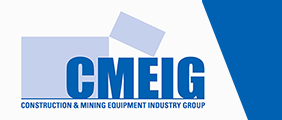Welcome to the winter newsletter.
As we move further into 2025, I’d like to take a moment to reflect on the evolving landscape of Australia’s construction and mining equipment sectors.
Regardless of political preferences, the recent Federal election has brought a level of certainty around the ALP’s commitment to the civil construction industry, with over $120 billion in national infrastructure projects planned. At the state level, however, investment confidence is mixed, with Queensland, Western Australia and New South Wales currently offering the most promising outlooks based on government spending commitments.
In the mining sector, the ALP is now positioned to progress its Future Made in Australia agenda, aiming to maximise the economic and industrial benefits of the net-zero transition and solidify Australia’s role in a changing global economic and strategic environment.
Looking at equipment demand for the remainder of 2025, confidence levels remain neutral overall, with some growth expected in Queensland, New South Wales and Western Australia. Other states and territories may experience flat conditions or a modest decline. The five-year outlook is more positive, aligned with the ramp-up of various government-backed projects.
A review of equipment sales for the first four months of 2025 across all categories shows total demand has declined by over 30% compared to the 2023 peak during the same period. The construction sector has taken the greatest hit, with excavator sales down just over 25%. In contrast, mining equipment sales have risen by just over 10% (year to date versus 2023). Notably, when compared to pre-COVID 2020 figures, demand in 2025 is still up over 30%, with excavator demand alone increasing by approximately 40%, suggesting this may be more of a market correction than a downturn.
Turning to CMEIG’s working groups, it’s been a productive year so far for the Engineering Working Group, with major areas of focus including electrification and electrical safety, lifting with excavators and the ongoing development of AS20474, the overarching Earthmoving Machinery Standard.
Meanwhile, the Education and Training Working Group continues to work closely with stakeholders on emerging challenges, particularly around safety standards for electric-powered machinery. I’d also like to acknowledge Matt Tosolini for his significant contribution to CMEIG. Matt is stepping down from his role, and we sincerely thank him for his dedication and leadership.
We’re pleased to welcome Kate Pemberton, National Apprentice Development Manager at Komatsu, who will step into the role. We look forward to her insights and contributions to the group.
Finally, Paul Torrington has chosen not to seek re-election for the role of CMEIG Chair. I would like to thank Paul for his Leadership in the past 12 months and also welcome Greg Mumford in the Role of CMEIG Chair.
Best regards,
Frank Gili
CEO, CMEIG

